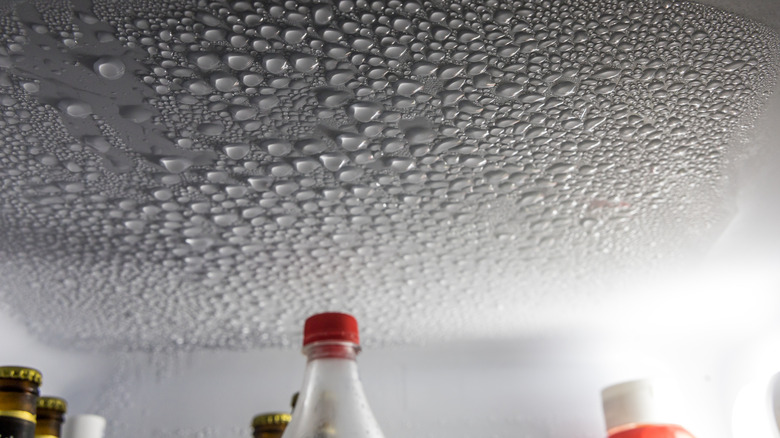The Grocery Store Refrigerator Red Flag You Shouldn't Ignore
When you're not fighting for the last pumpkin pie on aisle three or slowly creeping up the 20-mile-long weekend line at the checkout, grocery shopping can be a pretty pleasant experience. Every state has its most popular store, and whether you prefer Kroger or Aldi, there's no shame in secretly loving the solitude that comes with perusing the aisles for supplies. Finding our most trusted grocery store isn't just about cheaper prices or brands we love — it's also about the red flags (or lack thereof) that we see. Some are easy to brush off, like tiny parking lots or mispriced items, but other red flags you simply cannot ignore. If you see products in the refrigerated section that are dripping with condensation, leave immediately.
When normally frozen or refrigerated products are "sweating" while still inside coolers, it's a sign that the interior fridge temperature may be too warm. According to the U.S. Food and Drug Administration (FDA), refrigerators should be kept at or below 40 degrees Fahrenheit and freezers should be kept at 0 degrees Fahrenheit. If a refrigerator is faulty, food temperatures can rise, putting those items in the "Temperature Danger Zone" and increasing the risk of foodborne illnesses. It's not unusual to see cold items "sweat" as you transport them home, but if it's "sweating" while still in the cooler, you can't trust that it's been properly stored.
Sweaty items at a grocery store are a sign of unsafe storage
In a functioning refrigerator, food items should be kept at a cool 37 to 40 degrees Fahrenheit to prevent bacteria growth, but containers and boxes with condensation often indicate a problem with temperature. Whether the coolers are broken entirely or set at a temperature too high to maintain a safe environment, it's best not to purchase or consume chilled or frozen food items that have condensation. Improper door latching is another way to accidentally destroy refrigerated food, even if the cooling mechanisms are all in perfect working order. If the refrigerator doors don't form an airtight seal, warm air can seep in, preventing the fridge from maintaining its required cold temperature.
Refrigerators were invented to address the growing need to preserve fresh food, but when a fridge breaks down or malfunctions, food-borne illnesses have a chance to take root. Some of the most common illnesses caused by improper temperature control include E. coli, Staphylococcus aureus, listeria, and salmonella, all of which grow rapidly on foods stored in warm conditions. Salmonella and listeria cause dozens of food recalls each year, but food items that grow these bacteria due to faulty refrigeration systems can only be caught by observant employees and vigilant customers. We've heard people say that grocery stores are the new singles hotspot, but if the refrigerated section gives off red flags, you might want to swipe left on that aisle, too.

